“OPEN
CALL”
ANNOUNCING THE WINNERS
We’re delighted to present the results of our August competition judged by South African conceptual photographer Tsoku Maela, whose deeply personal work focuses on the human condition – the mind, body and spirit – in the context of blackness and Africa’s colonial past.
Our occasional Open Calls give photographers carte blanche to submit work of any genre, style and topic, and so it’s no surprise the resulting selection traces a path through documentary, street, portrait, reportage and of course conceptual photography – with spades of the creative execution and thought-provoking subject matter that defines Maela’s work.
“There was so much exceptional work, and it was a real privilege to have experienced these stories” Maela says. “I try to speak from the heart when an image moves me deeply. While I think all of the images here are wonderful, there are some for which I hope not to soil their brilliance by offering half-formed thoughts. I have commented on some, but there are others for which I cannot find the words to explain why I enjoy them.”
Congratulations to the selected photographers, and thank you to everyone who submitted. You can join the discussion on Facebook and Instagram.
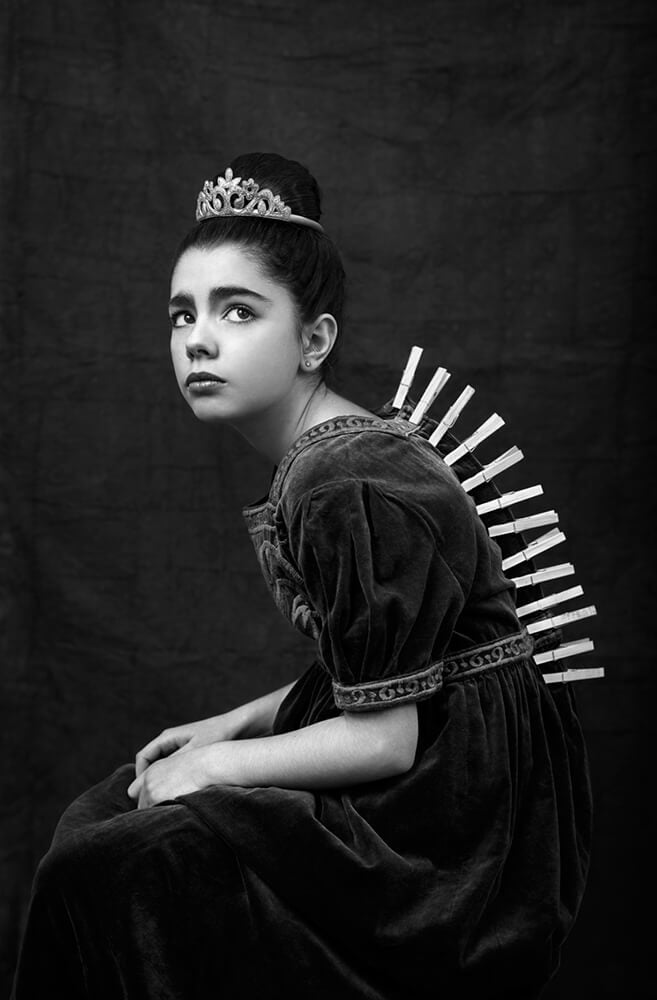
“Everything about this photograph feels intentional. Which makes it all the more impactful in my mind. The first time I saw the image I thought it was a beautiful portrait of youth. But as is often the case with such photographs the beauty masks a deeper, less benign story underneath. It called for me to spend more time with it. To listen. And it became clear that what at first seemed perfect was in fact a story of contradictions. Here is a little girl adorning what appears to be a princess’ crown, but the expression on her face isn’t of one who feels empowered or comfortable, and her posture does not scream confidence. Heavy is the crown after all? No, it is in fact the other details in the photograph that help tell the rest of the story. Her regal wear is held together by pegs, which do a wonderful job of creating the illusion of a bent and bare spine. There is insecurity and fragility about that. A feeling that this dress was forced onto her by someone who misunderstood her. It doesn’t fit. The author’s intention is to tell a story of gender socialization, and it comes across. But like most brilliant photographs it tells the story of all of us and our pursuit of authenticity or an authentic life. To be whoever we wish to be. Anything short of that is a robbery of our youthfulness. We can all wear our crowns on our terms. The crowns that were meant for us.” – TSOKU MAELA
Photographer statement – “A portrait of my daughter Maud who was eleven years old in 2018. Maud has always been independent and wild, she was anything but a wise little princess. I imagined this series of portraits of her with a costume that does not suit her, as a metaphor for roles and stereotypes that society conveys according to sex.”
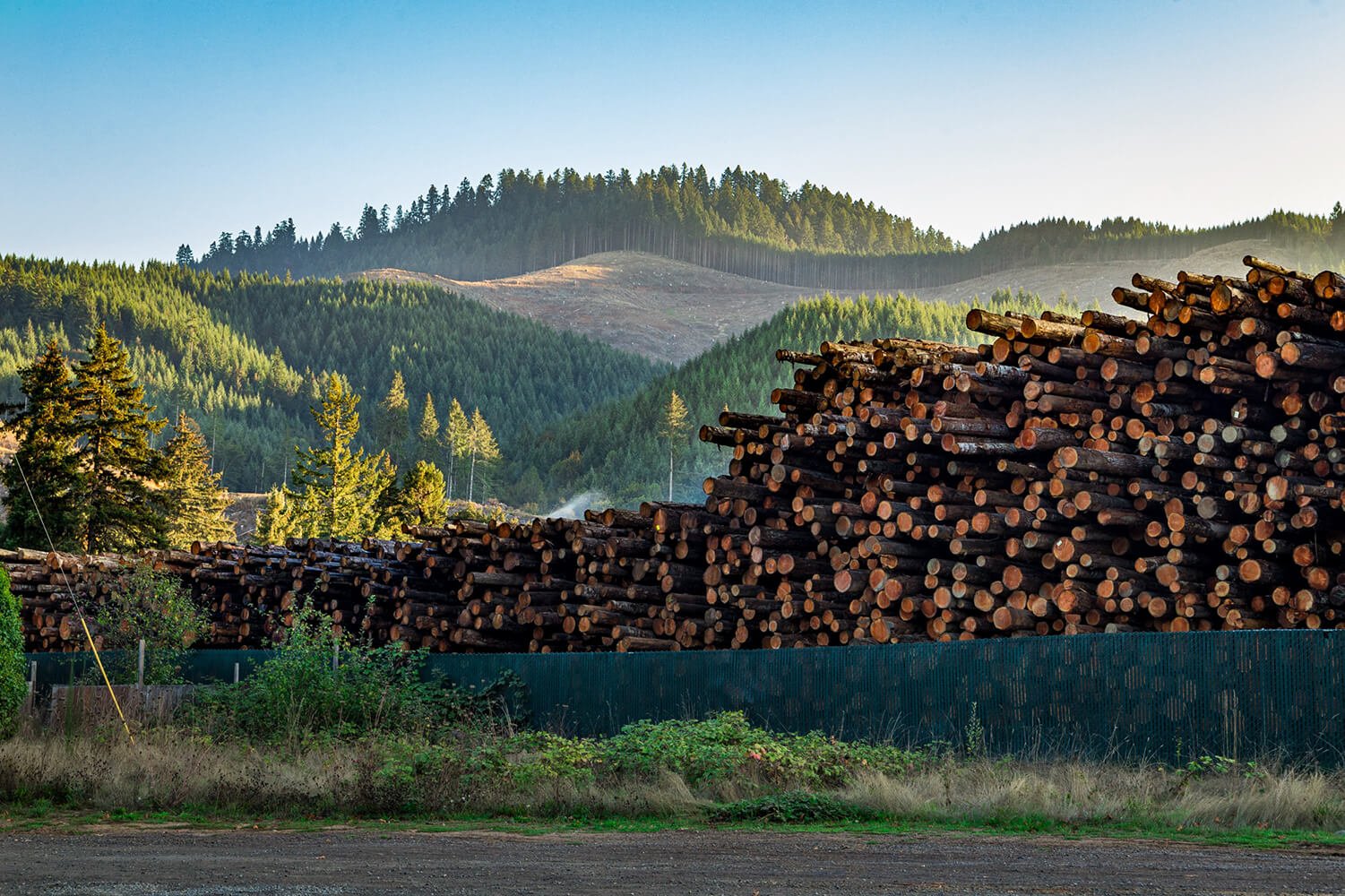
“Photographs such as this one make the photographer envy the painter far less than we usually would. Painters have the privilege, and some may argue the burden, of a blank canvas, while photographers have to negotiate with the moment in close scrutiny. This photograph couldn’t have fallen into place, nor have been framed any better to convey the feeling and intention of the author. The background is strewn by a buoyant landscape. The lines moving with the ebb and flow of waves. Lush with life as sunlight washes over it. It’s harmonious. But in sharp contrast, the foreground is stale and rigid. Frozen in place. Obscuring the view of that once enjoyable fauna. The lines are sharp and come violently towards us. A brilliant illustration of powerful storytelling within the frame. Driving the photographer’s intention of striking a balance between our human needs and the preservation of nature. Brilliant.” – TSOKU MAELA
Photographer statement – “From the series Alterations of Wilderness; The Logged Landscape of Oregon. A documentary series that makes a statement about the effects of the natural landscape due to the logging industry. My approach to photographing each landscape aims to relay a story about the history and human impact on the environment due to logging and deforestation. This body of work highlights how human interference impacts the environment. This series is the groundwork for essential education and awareness that is needed to help sustain a healthy balance between preserving the pristine wilderness and supporting human life and evolution on the planet.
Image: “Misplaced Mountain” Noti, Oregon 10-4-2020 Noti Dimension Mill, a sister-mill with Seneca Sawmill stacks fresh timber.”
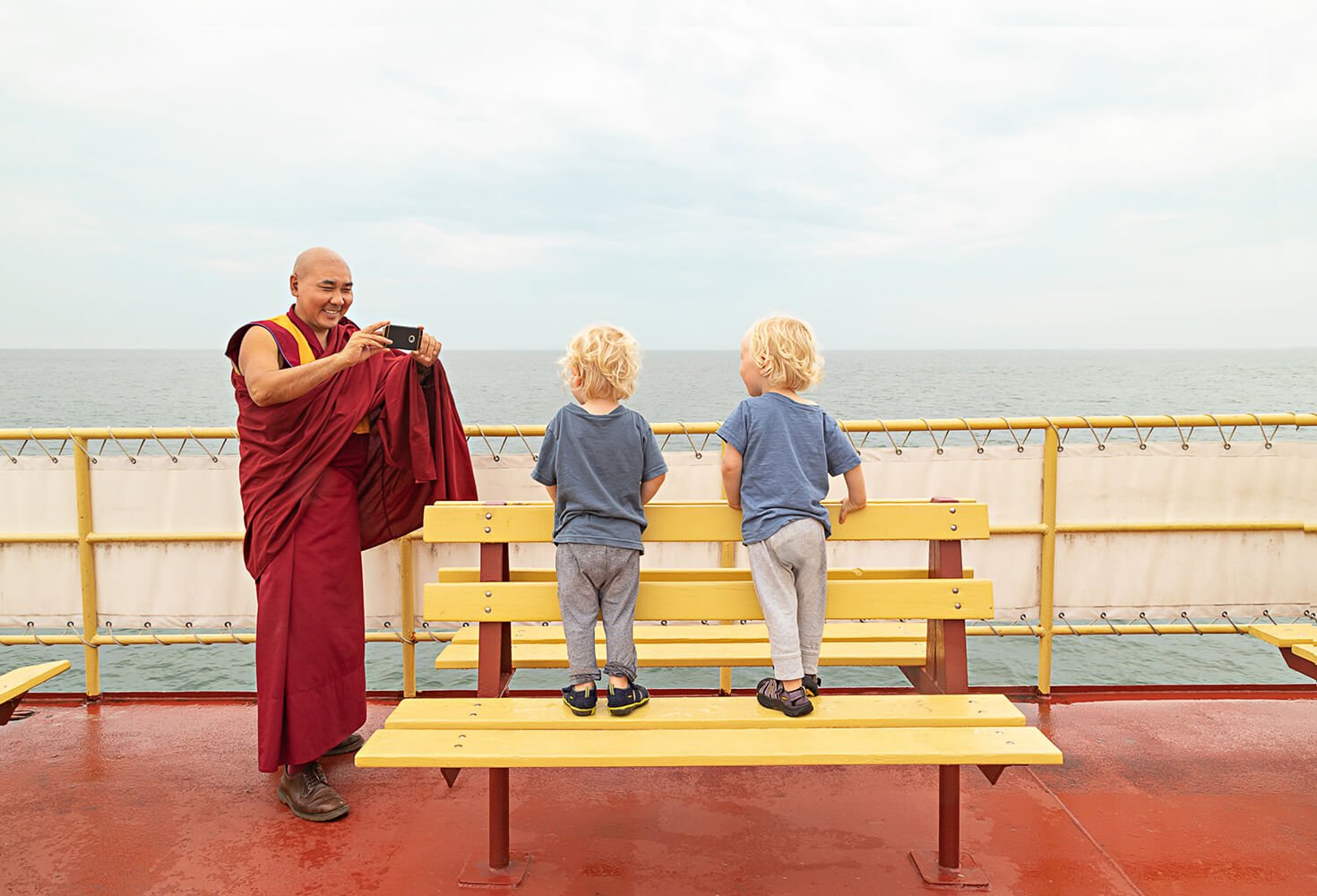
“This image titled ‘The Gaze’ is a well-balanced combination of composition, color, and story. The consistent color palette is impressive as it both occurs in man-made architecture, fabrics, and also in nature. It feels like a frame out of a Wes Anderson film in its quirky and playful nature. Monks are generally, incorrectly, considered to be out of touch with modern society and its advancements, but they are people just like and me who have decided to leave their old life behind to follow a new one under the 227 precepts (for the fully ordained bhikkhus, of course) of Buddhism. One of the daily rituals of Monks is to serve the community, so depending on which country you live in you might catch a glimpse of them serving in communities, and those communities also reciprocating in-kind for their wisdom and teachings. Outside of the cross-cultural and generational aspect, the image also tugs gently at the power struggle presented by photography. The observer becoming observed. Monks being the guardians of men, in essence watching over them, then become watched by another (higher) being. It begs the question of whether good deeds are still considered to be so when only observed by another, or whether we should strive to bring joy into the lives of others without expecting some sort of reward for it. This moment feels genuine with kids looking comfortable in the presence of the Monk, embracing their presence as he also embraces theirs in a space of peace and serenity. Beautiful.” – TSOKU MAELA
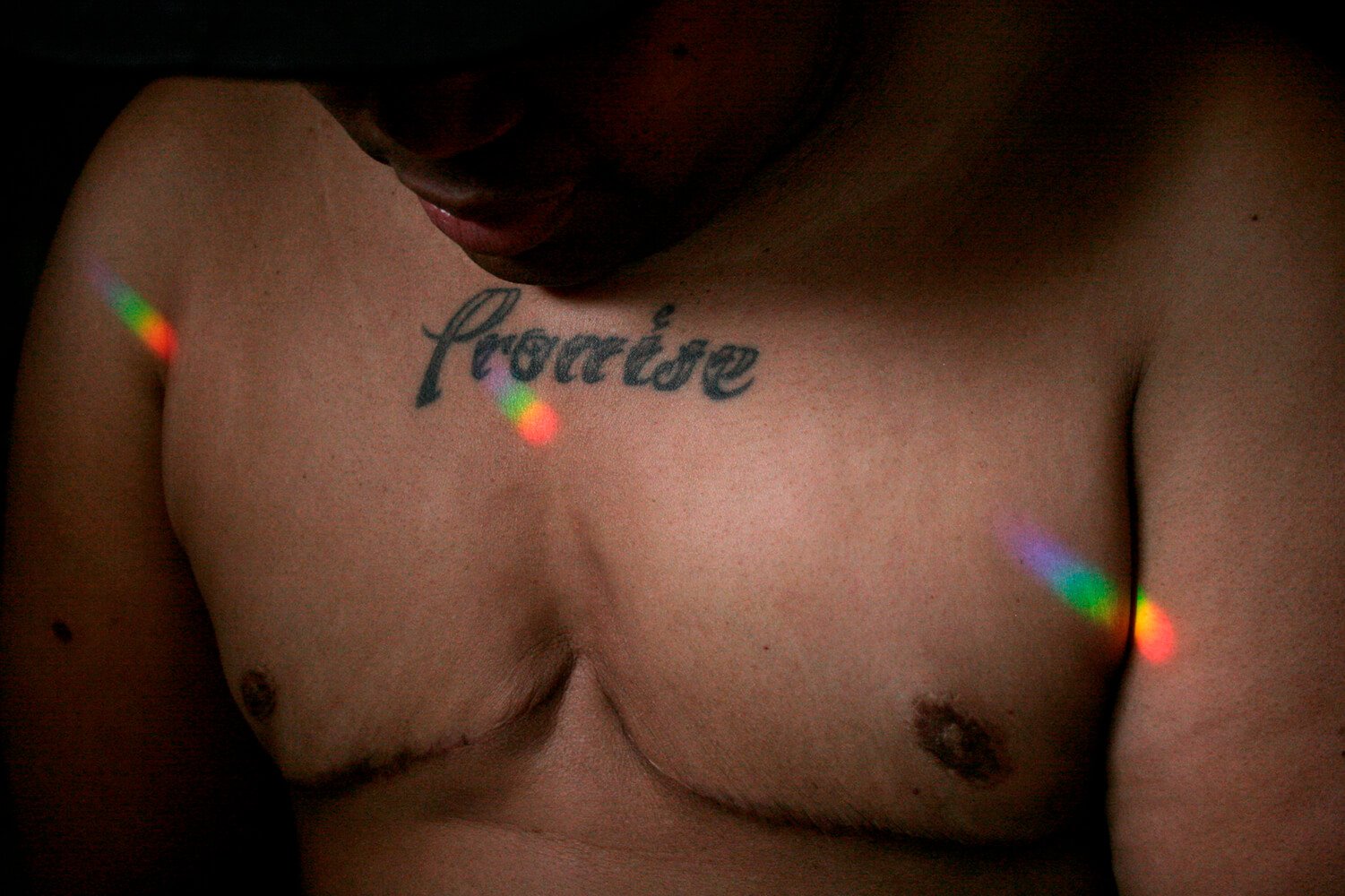
SEBRINA FASSBENDER
“This is probably as close as a lot of people are going to get to see a trans man post-surgery. While the fresh scars may feel like a metaphor for growing pains, the experiences of trans folk are far from metaphorical. The word ‘Promise’ is tattooed across Orion’s chest. I cannot say with utmost certainty that I know what that promise was, but one gets the feeling that is a promise to self. To be honest with oneself and to live out one’s truth. Our bodies are home to us, but we live in a society that commodifies and objectifies those same bodies. Even though we cannot see Orion’s face in the light, he feels at rest or at peace. As though the journey to arrive here, at this moment where he feels at home in his body, had been a long and arduous one.” – TSOKU MAELA
Photographer statement – “Orion. A portrait showing the quiet beauty of Orion, a trans man after top surgery.”
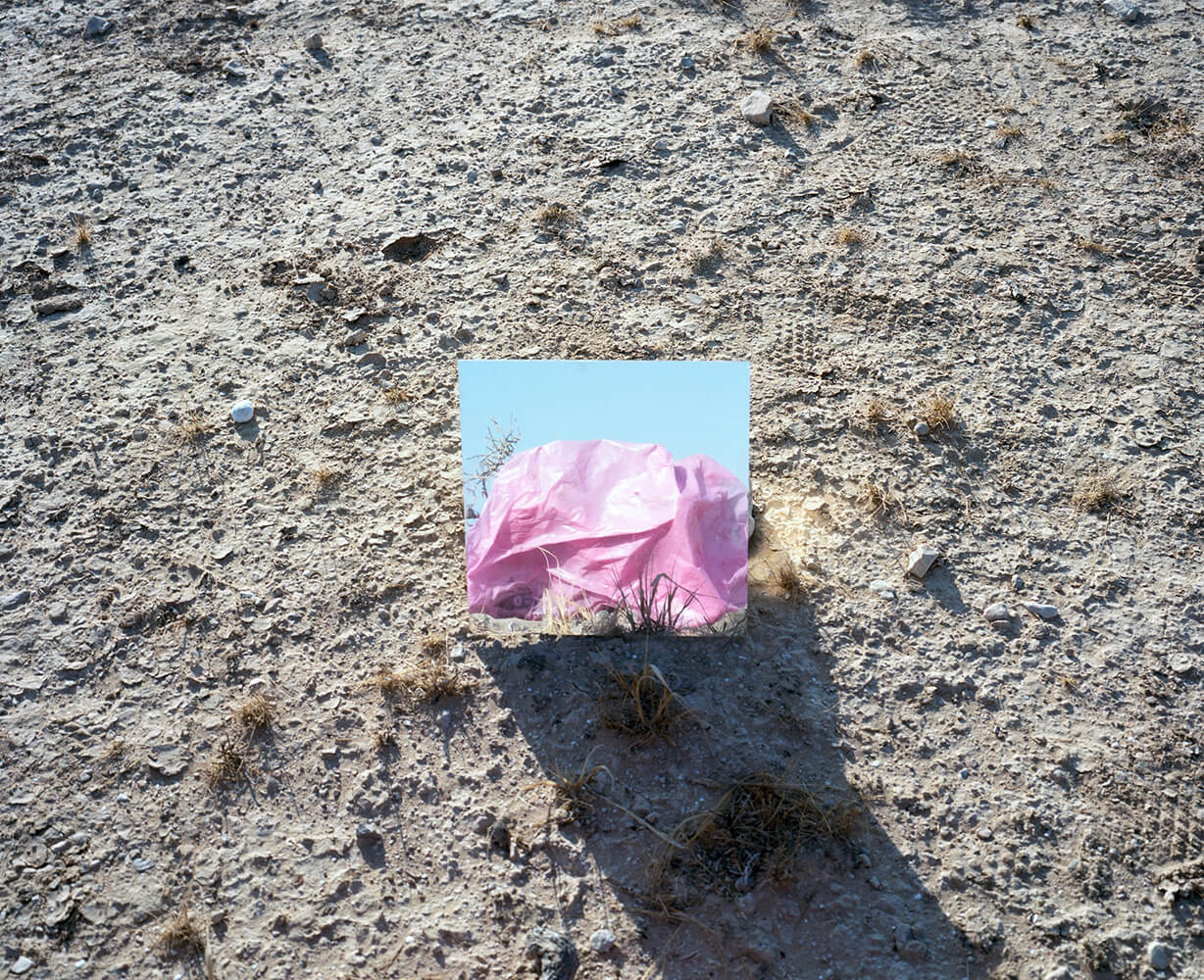
“Mirrors feel like portals at times. When one looks at their reflection it almost feels surreal to be seeing oneself. An alternative in an alternate reality. Living in cosmopolitan cities can make distant worlds like deserts feel unreal. Existing on an axis of their own. This image reminded me of the interconnectedness of our realities. The actions of one world have an inextricable influence on the other. The photograph captures a reflection of garbage that has found its way into the Negev desert of Israel. It feels like two worlds colliding. A desert looking back on its reflection, unable to recognize itself.” – TSOKU MAELA
Photographer statement – “Mirrors in the Negev desert in Israel, mirroring garbage that lays around there.”
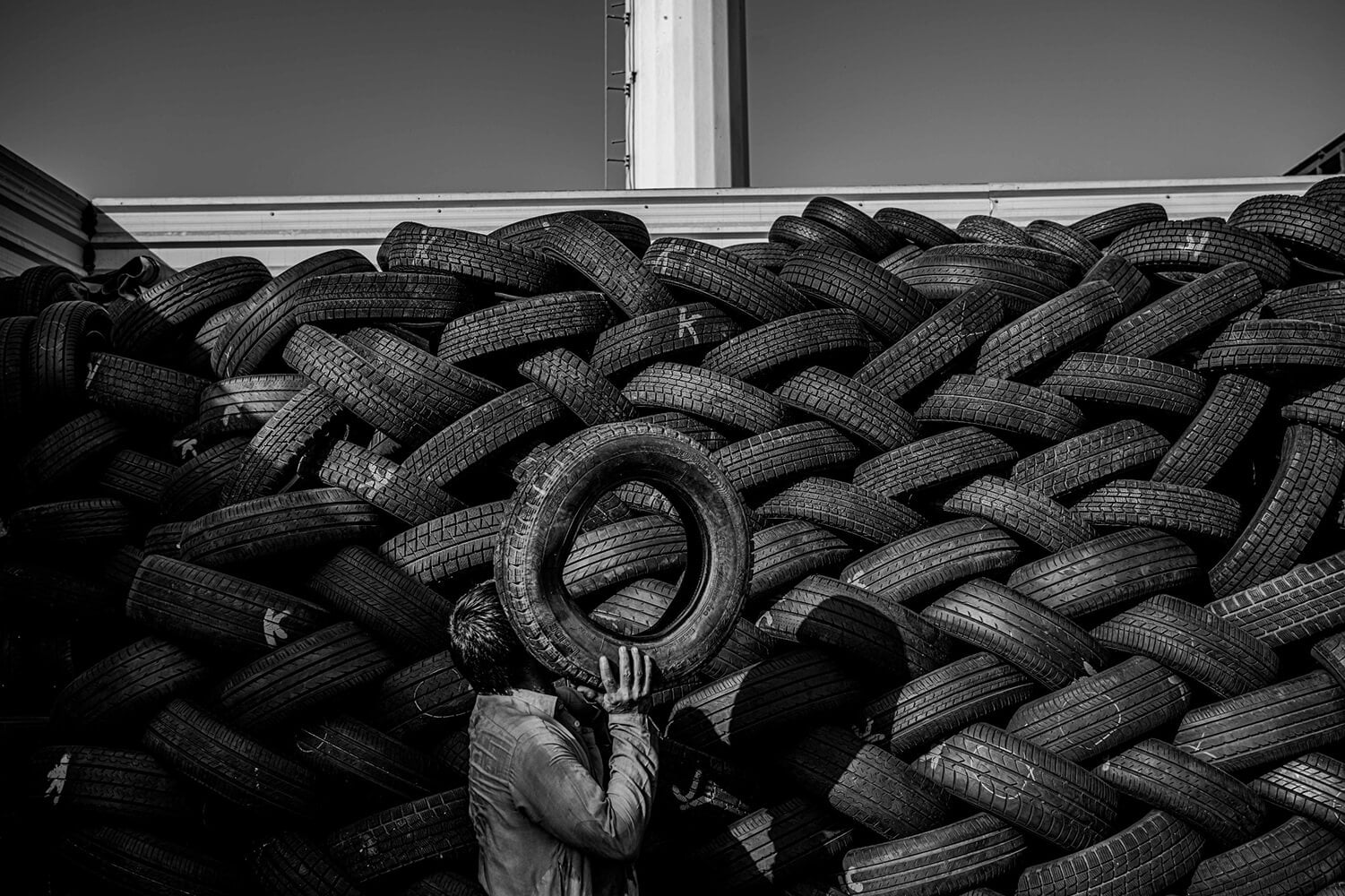
“There’s something starkly beautiful in the textures of interlocking tire treads in this giant rubber mosaic, captured in black and white to emphasize their patterns of highlights and shadows. A man is poised to throw another hoop onto the top of the pile, as if he’s partaking in a strange urban sport – ‘Street Tetris’ as Rico suggests, or maybe ‘Street Jenga’. We just hope the wall doesn’t come tumbling down on him!” – LIFE FRAMER
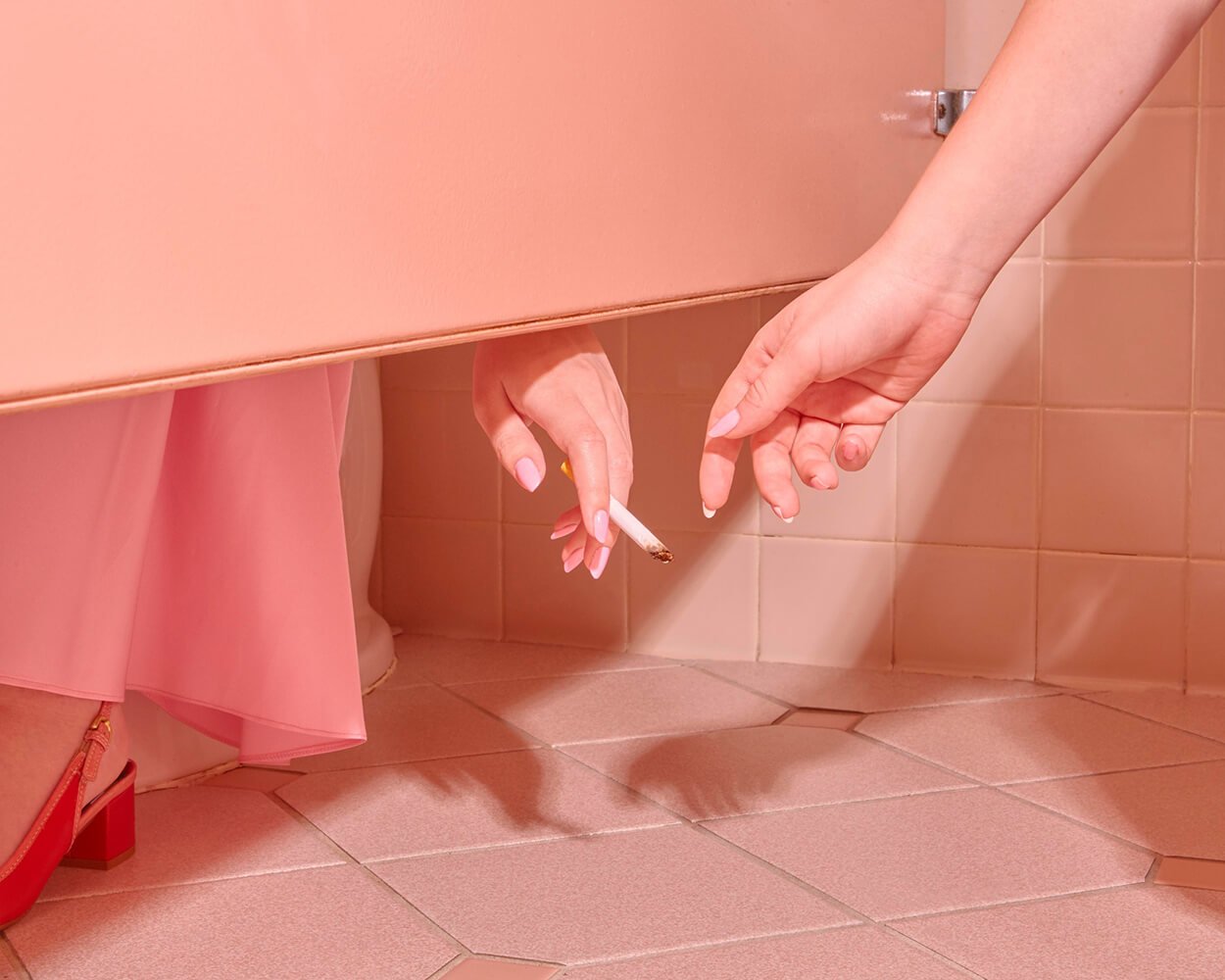
“It’s interesting to note that around 1929 Edward Bernays ran a campaign to get women to smoke cigarettes. For Bernays and Lucky Strike the tobacco company who hired him, this was merely to capitalize on a portion of the market that no one else was speaking to as smoking for women at the time was seen as a taboo. It was a masculine thing. The idea was sold to women as an equalizer to men. A way for women to reclaim their power and to be free. Hence torches of freedom, a play on the torch held up by lady liberty. And it worked, but smoking amongst women is still not as common as it is among men. It’s a guilty pleasure if you like. A necessary one at times, too. This photograph is staged and captured to tell the story of femininity so beautifully. The (public) bathroom can be a safe space for a lot of women. A place to collect and recenter themselves. This casual passing of the cigarette between these two women shows solidarity. The sort of solidarity you would find in that space. I love the tone of the image in color too.” – TSOKU MAELA
Photographer statement – “My work centers around the space that women hold in our society and how that is continually evolving by stepping back in time to take a critical look cinematic still in a dreamy world from the past. I work to transform seemingly insignificant moments into images that ask you to think of what is unknown that surrounds each woman.”
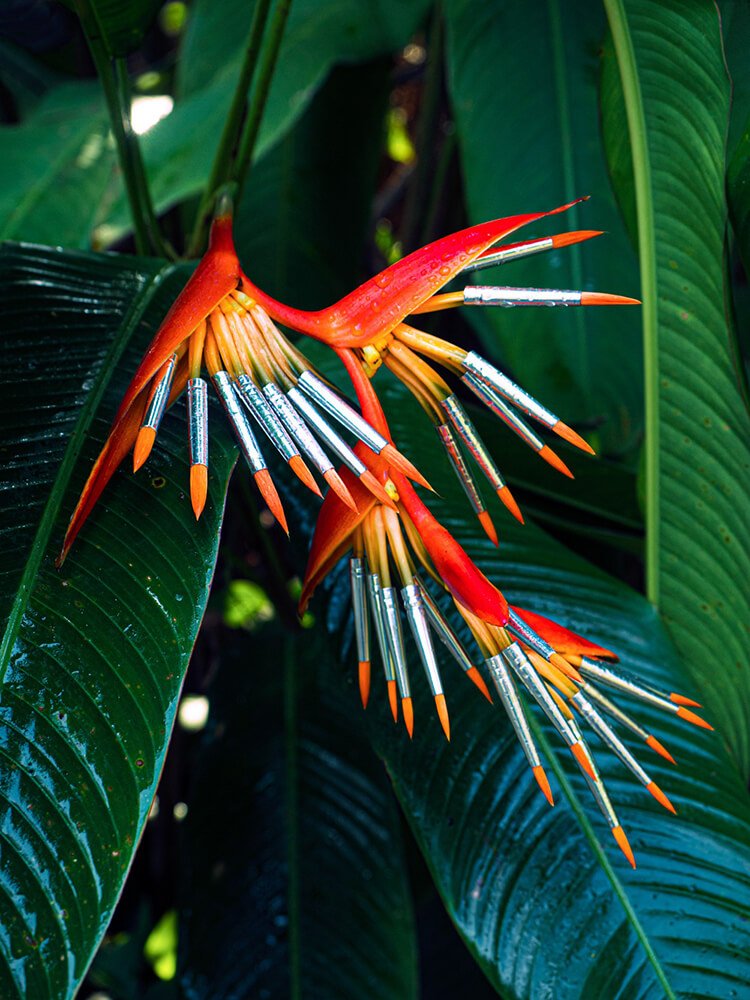
“The photographer has titled this series “How to Store your Stuff in Nature”. And it quickly makes sense when you realize that this plant isn’t exactly completely a plant! I can’t exactly tell you what the objects added to the plant are, but they feel like an extension of it. I enjoyed the creativity and thought behind the image the most, as I had to read the statement to realize that I had been well deceived in thinking this was some rare plant I had never heard of. Brilliant work of photography and design.” – TSOKU MAELA
Photographer statement – “I stayed in Indonesia and Thailand for a year and a half. The new flora in the tropics brought me a new perspective and interest. This series is an experiment to maximize the visual amusement I experienced through tropical plants and to combine nature photography and still-life photography in my way. On the surface, it seems to be a kind of introduction to various ways to organize stuff with plants, but in substance, this is creating a temporarily existing three-dimensional work that emphasizes the shape, texture, and thickness of plants.”
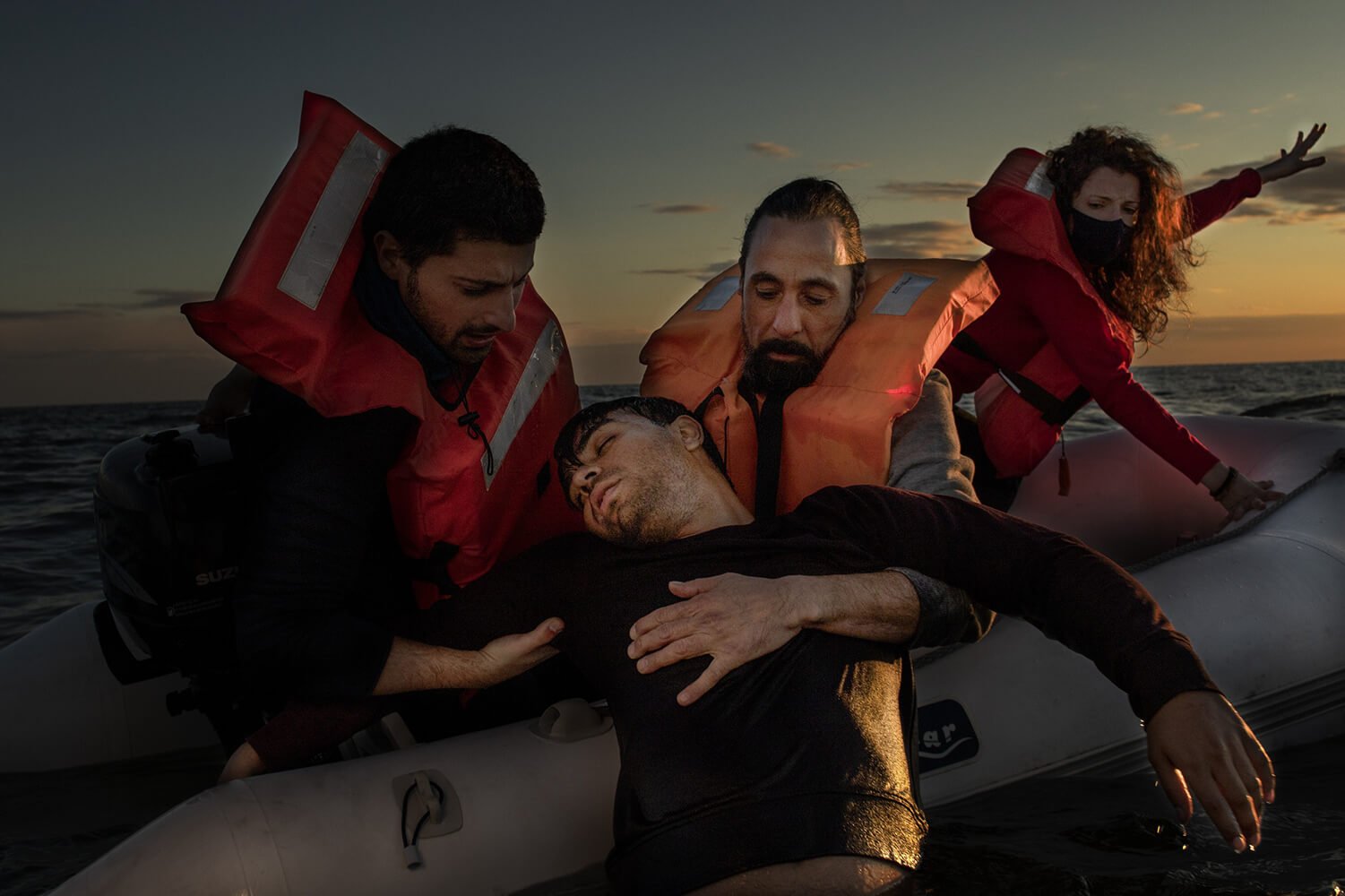
“The golden, painterly light and careful framing of this image quickly gives way to its subject matter – a migrant being pulled from the water by a rescue team patrolling the Mediterranean Sea. It’s a difficult scene to look at – symbolizing the heartbreaking state of our world where people are faced with risking their lives to escape war, poverty or hardship. And yet these three rescuers, each watching this man, each stepping up the help, convey a silver lining, a ‘hope’ as Fabrizio expresses in his statement – that there is goodness and humanity in even the darkest of times. It’s a beautiful image, with a serenity that belies its complexity, documenting an important issue and carrying huge emotional weight.” – LIFE FRAMER
Photographer statement – “2020 was the year that will go down in history as the year of Covid. But the world didn’t stop with the Virus. The wars, the poverty, the drought, all the drama in the world continued. And people continued to flee those places in search of a better future and put their lives at risk. In the Mediterranean Sea, the Covid has not stopped even the rescuers, who are at sea every day with a mission, that of saving lives. From dawn to dusk, these heroes try to save the victims of shipwrecks guided by the greatest feeling that can exist: hope.”
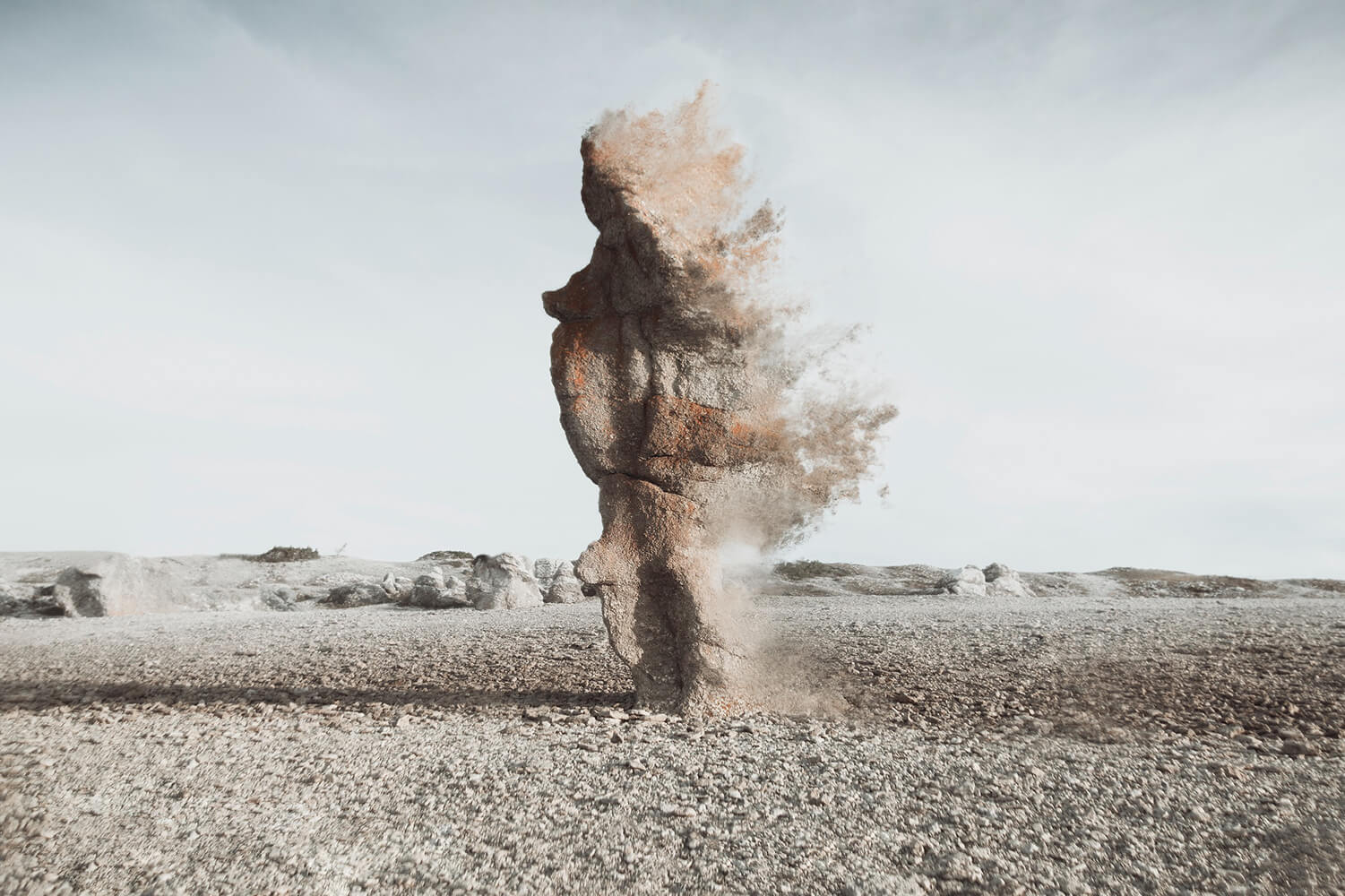
“This is a photograph of ancient rocks standing in Gotland, Sweden. Through digital manipulation, the artist has illustrated how even these seemingly immovable objects will pass with time. While this change sometimes may seem indistinguishable, it does happen over time. The photograph reminded me that nothing is ever truly static, not even our memories. They are as fragile as our histories, perceptions, and identities.” – TSOKU MAELA
Photographer statement – “From the series Burst. These rocks have been standing there (Fårö, Gotland, Sweden) for millions of years, and they’ll probably be there for a very long time after you and I have passed on. But even though they seem frozen in time, they do change all the time. The wind, the sand, the sea are all affecting its physical appearance. The people that venture to this part of the world to see them all make up their own impressions of them and tell tales about their visit to other people; this, too, changes them.
Much like our own identities, places and objects seem to change depending on who’s watching. For me it seemed appropriate to use digital techniques (although stemming from traditional water media techniques) to alter their surroundings and explore what would happen if these seemingly un-moveable big rocks one day would burst and be carried away by the wind.”
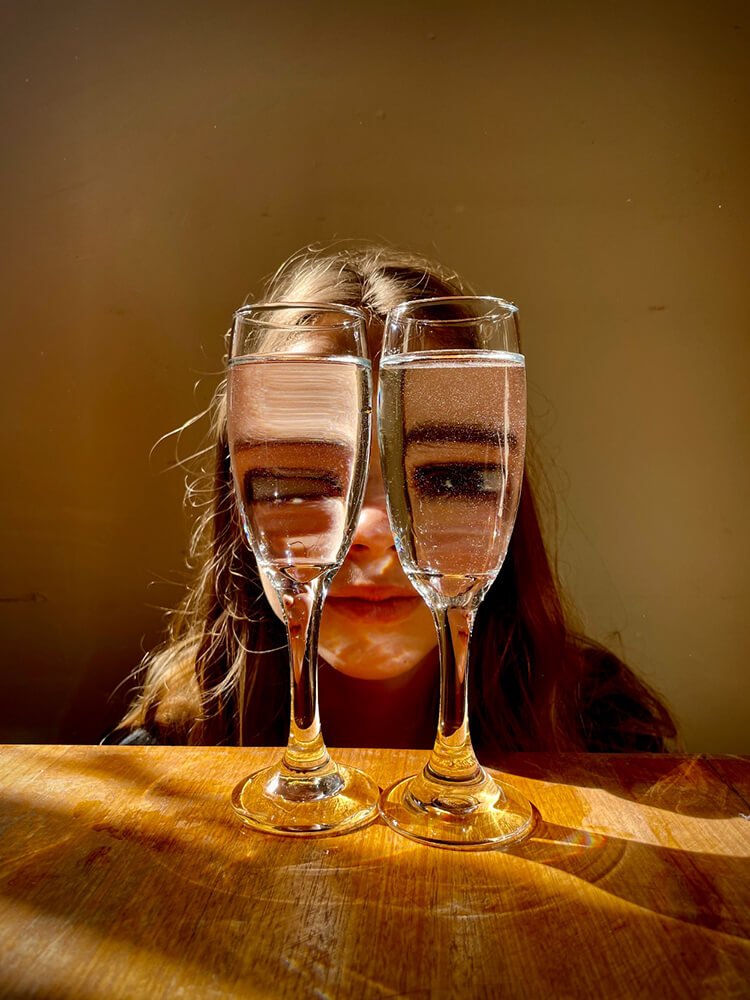
“I enjoyed the playfulness of this photograph. Photography can become too serious at times, but life isn’t always serious and life gives us images. This photograph was just that, beautiful and playful. It reminds me of characters such as Amélie. Mischievous and adventurous. I feel that while we can agree that children should not be drinking alcohol this image clearly shows why that is. Things become rather…fish-eyed very quickly. A cautionary tale for some adults too!” – TSOKU MAELA
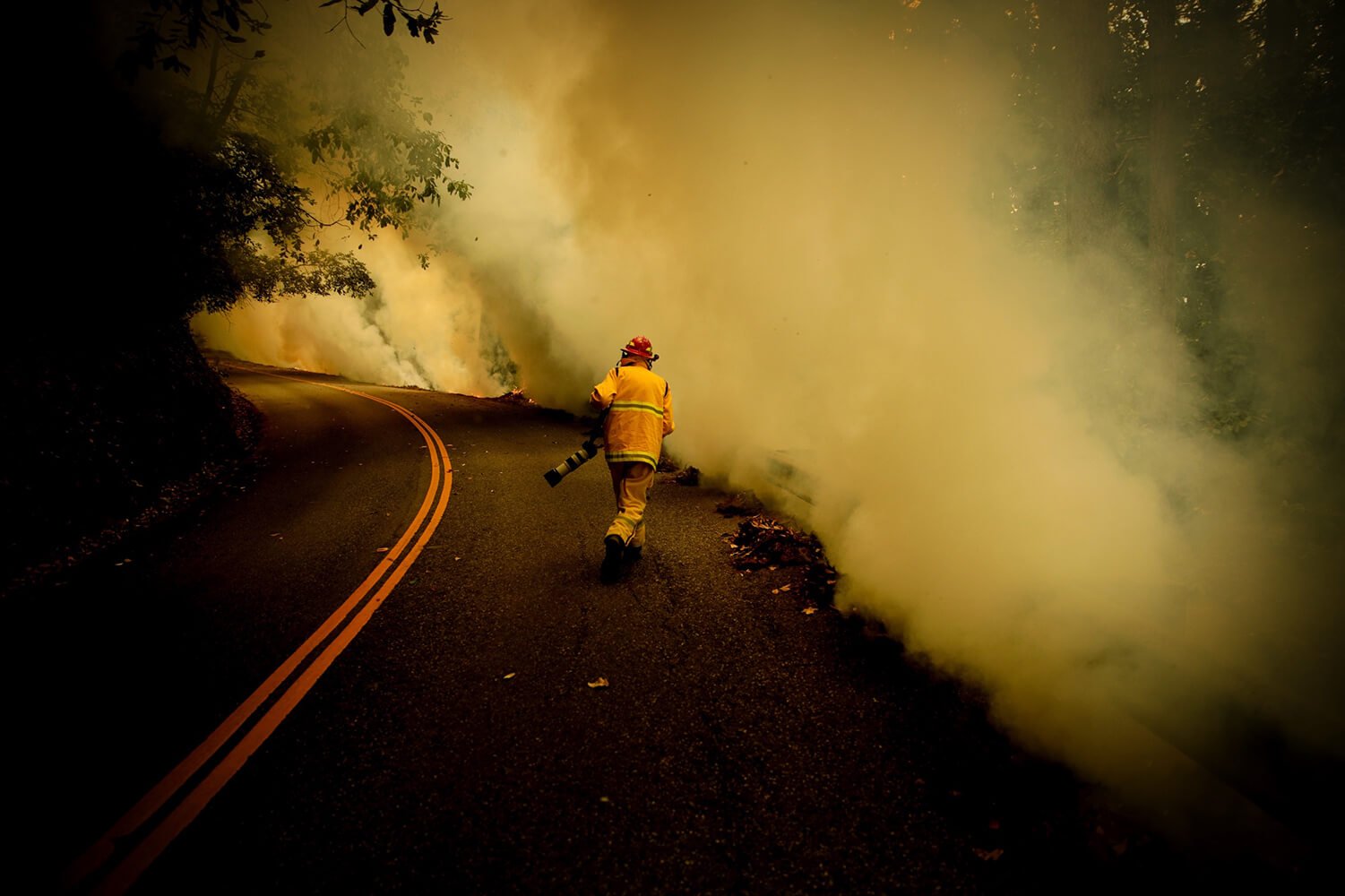
“The wildfires that ravaged Northern California last year were huge global news, highlighting both the increasing frequency of extreme weather events and the bravery of those that battled them. Here we witness the ferocity of the fires up close, and that bravery in action – the road markings and arc of smoke drawing the viewer into the center of the frame where a lone figure runs into, rather than away from the flames. What appears at first to be a firefighter is in fact another photographer, heading into the fire to “get that shot” as Kevin puts it. It’s a staggering image that examines the risks reportage photographers take to capture and disseminate news.” – LIFE FRAMER
Photographer statement – “Local photojournalist, Shmuel Thaler, runs towards the flames in order to get the shot. This is during the Santa Cruz CZU Fire in 2020.”
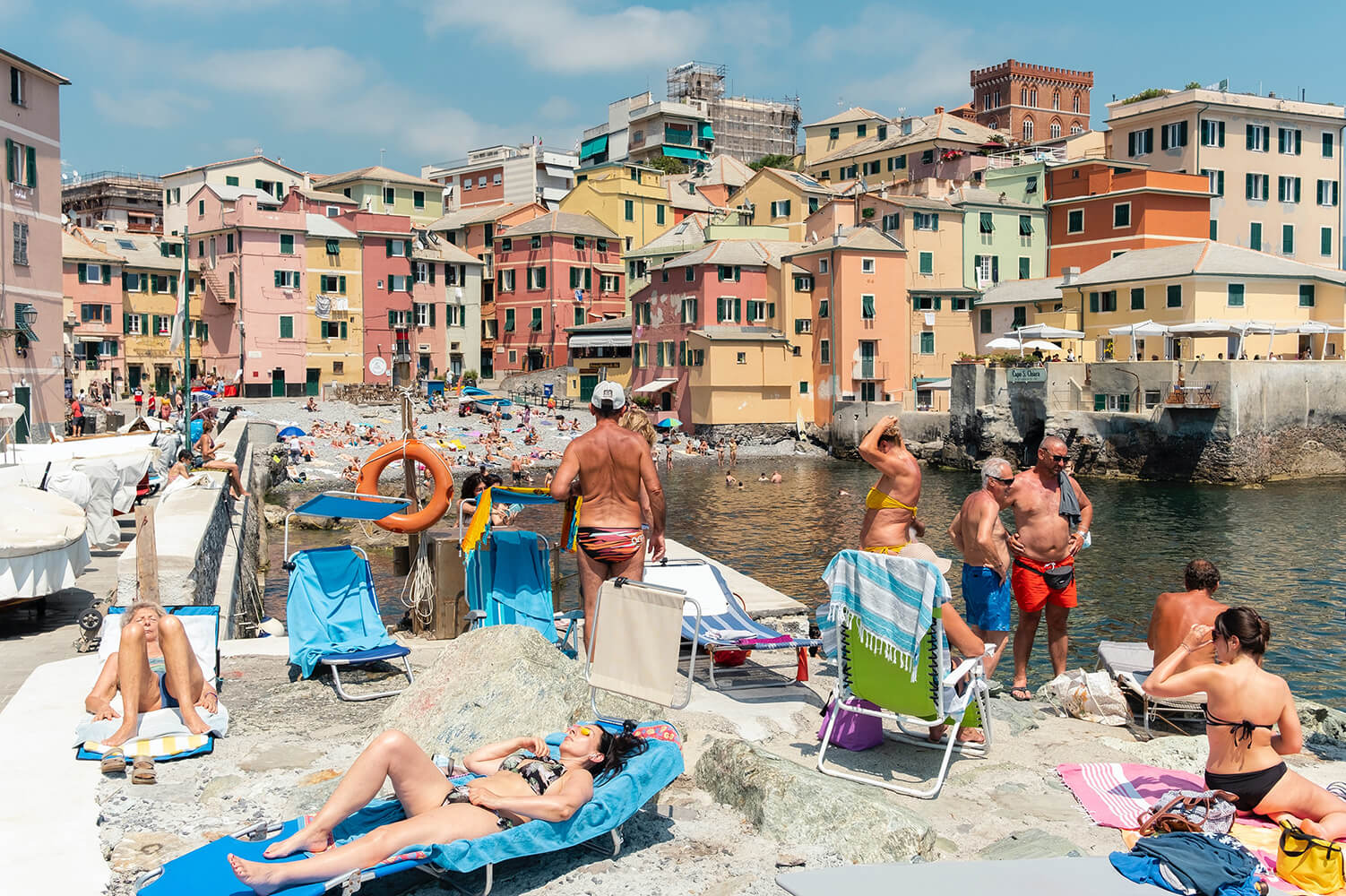
“The works of Ghanian artist Ablade Glover came to mind when I saw this image. His paintings would capture people in the busy cities of Ghana as a kaleidoscope of colors. The photograph in question is also busy but isn’t distracting. It’s almost a well-orchestrated splash of color. Where everyone and everything falls into place. A really impressive capture and beautiful composition.” – TSOKU MAELA
Photographer statement – “Boccadasse, Italy, 2021.”
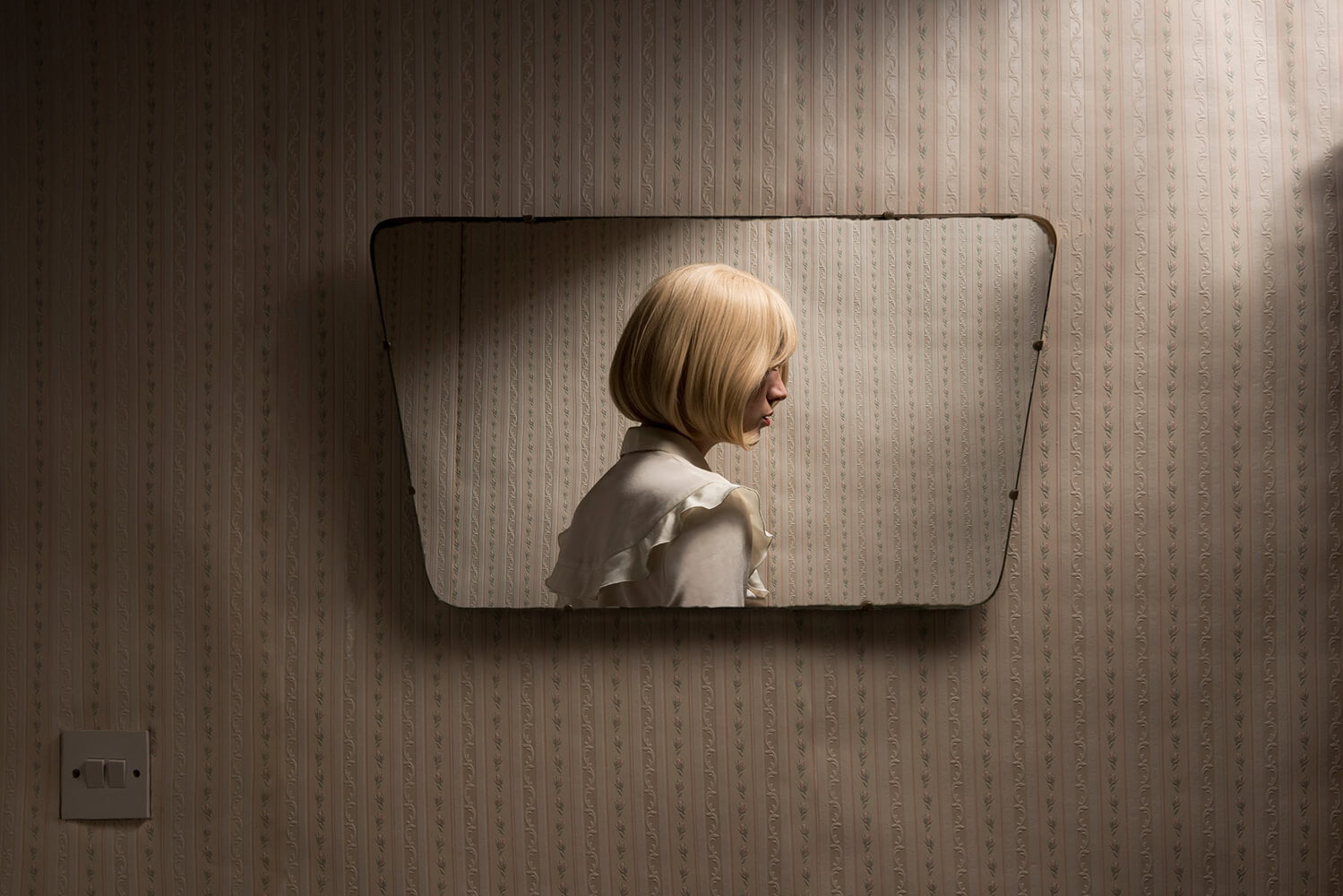
“Eliza speaks of the “malaise of postmodern living”, which is apt for this muted and beautifully constructed self-portrait. It has a quiet tension between the dilapidated setting and the perfectly groom subject, all dressed up with nowhere to go – the emptiness and repetition of the wallpaper a metaphor for an unending, unexplainable weariness, and the mirror creating a passive distance between subject and viewer. Working as one woman show – photographer, set designer, stylist and model – from home, Eliza channels an immense creativity into examining mundanity.” – LIFE FRAMER
Photographer statement – “My work explores the cultural malaise of postmodern living; alienation, loneliness and unease, setting out to capture a personal, interior ‘truth’ through my photography. Exploring the mundane and the tension that lies between comfort and restriction, my images address a contemporary fixation of productivity, where the ‘ordinary’ is less and less desirable. If you work hard enough, you can seemingly achieve anything. Imbued with nostalgia and a cinematic feel, I illustrate this ‘Age of Anxiety’, filled with passive entertainment and empty distractions of materialism. The silent images extracted from their narratives somehow impart the anxiety of a troubling daydream, with their subtle inclination toward the surreal. Disquieting images, with or without human figures, feel as though they emanate from fragments of the same story. Working as photographer, set designer, model, stylist, I stage these photographs alone, in the comfort of my own home.”
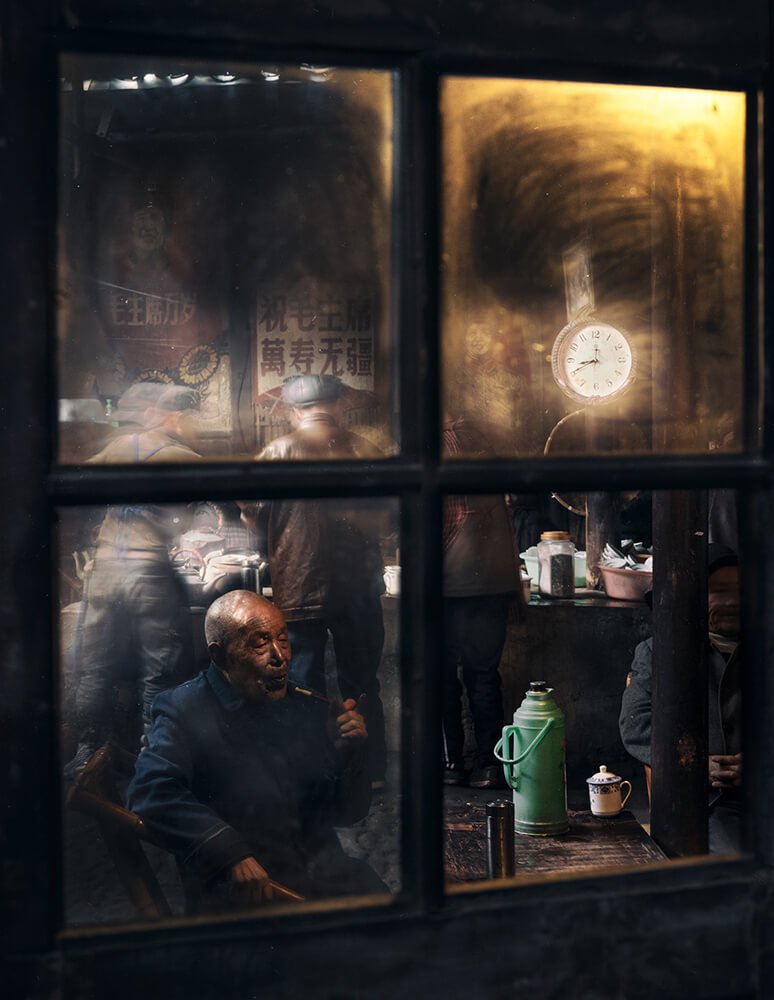
“I can’t tell you exactly where we are in this photograph. But I want to be there. There is a romantic melancholy about it. Framing our subject, a geriatric ponderously staring into the distance (perhaps a future, perhaps a past) while smoking a pipe, through the window frame is brilliant. It draws the eye directly to him an already busy composition. It’s 9 pm and it looks like the working men have gathered for some food and drink. It feels like a daily ritual. A safe space. What strikes me even more about the image is this insistence on time. Although the clock is frozen (as it would be in a photograph) the old man in contrast to the able-bodied working men has had his time in the sun and now rest in the shade, looking back at that life in quiet reverence.” – TSOKU MAELA
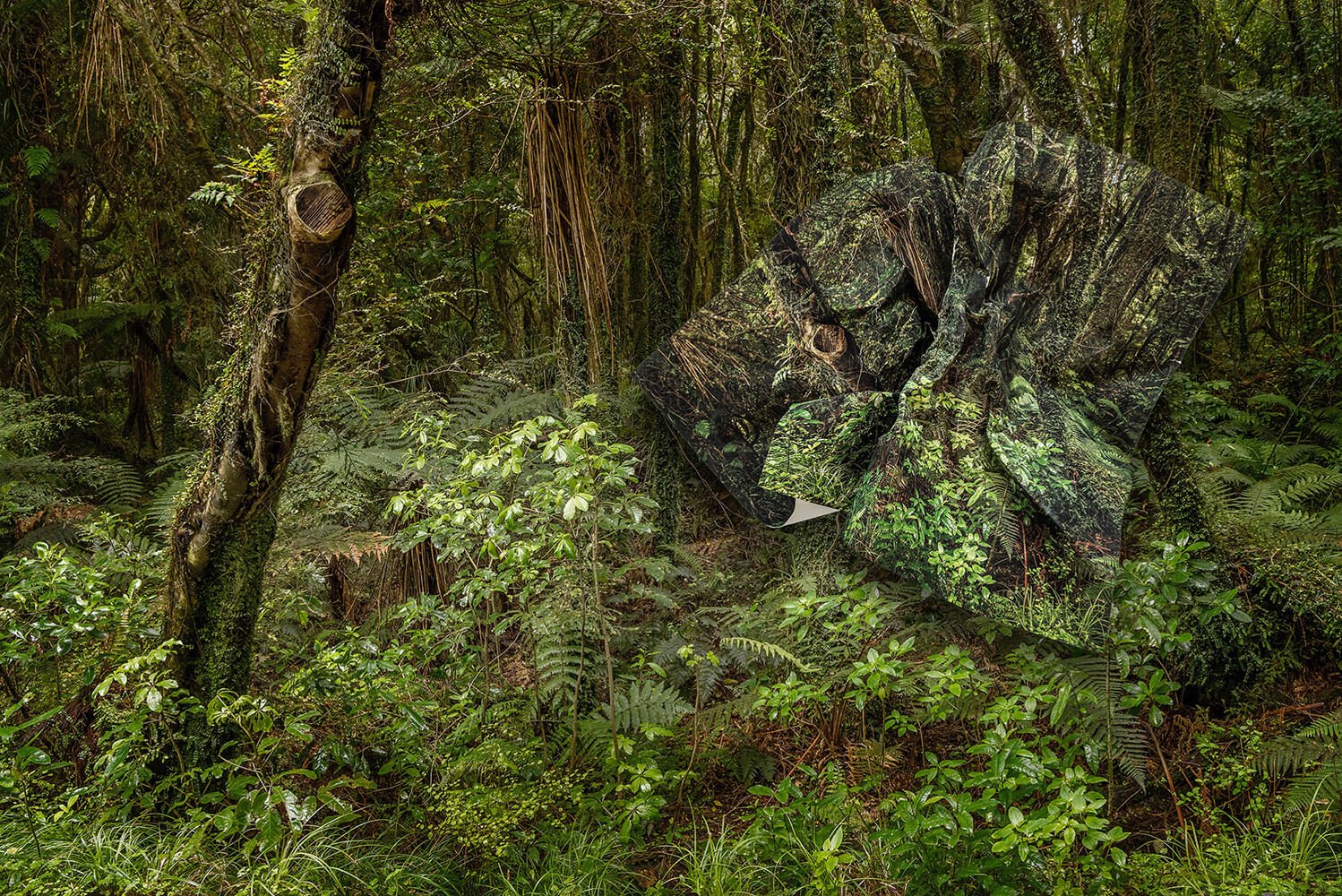
“Drawing a parallel between creases in paper and the damage humans wreck on the natural world, Ingrid’s unusual form of image manipulation acts to create a tactility to this forest scene – a strange three dimensionality that mimics the forms of roots and branches in the scene. It plays with, and asks the viewer to reflect on, ideas of the natural world as something consumable, disposable – there for our use and to be discarded when no longer required. As climate events become more extreme, one can’t help but question whether it’s the natural world that is unrecoverable, or our place as humans in it. While arresting and thought-provoking, Ingrid’s message may have been even more effective if it was more apparent – either in the statement or imagery itself – what environmental degradation was occuring in this particular scene.” – LIFE FRAMER
Photographer statement – “From the series Topografías de la Fragilidad. I have traveled from southern Argentina to the ice of Greenland. I have always been attracted to solitary and silent sceneries, bonding to a point where these spaces become a source of containment and protection.
It is perhaps because of this feeling that, back home, as a tribute, and possible farewell, to my emotional refuge, which has experienced serious environmental degradation, and through the materiality of the printed image, I intend to highlight the violent damage suffered by them, by manipulating and distorting my own personal landscapes, as a way of questioning our relationship with the natural world. It is said that a wrinkled piece of paper, can never regain its original shape, the trace persists. In the same way, nature which is disrespectfully invaded, is forever broken, and many times unrecoverable.”
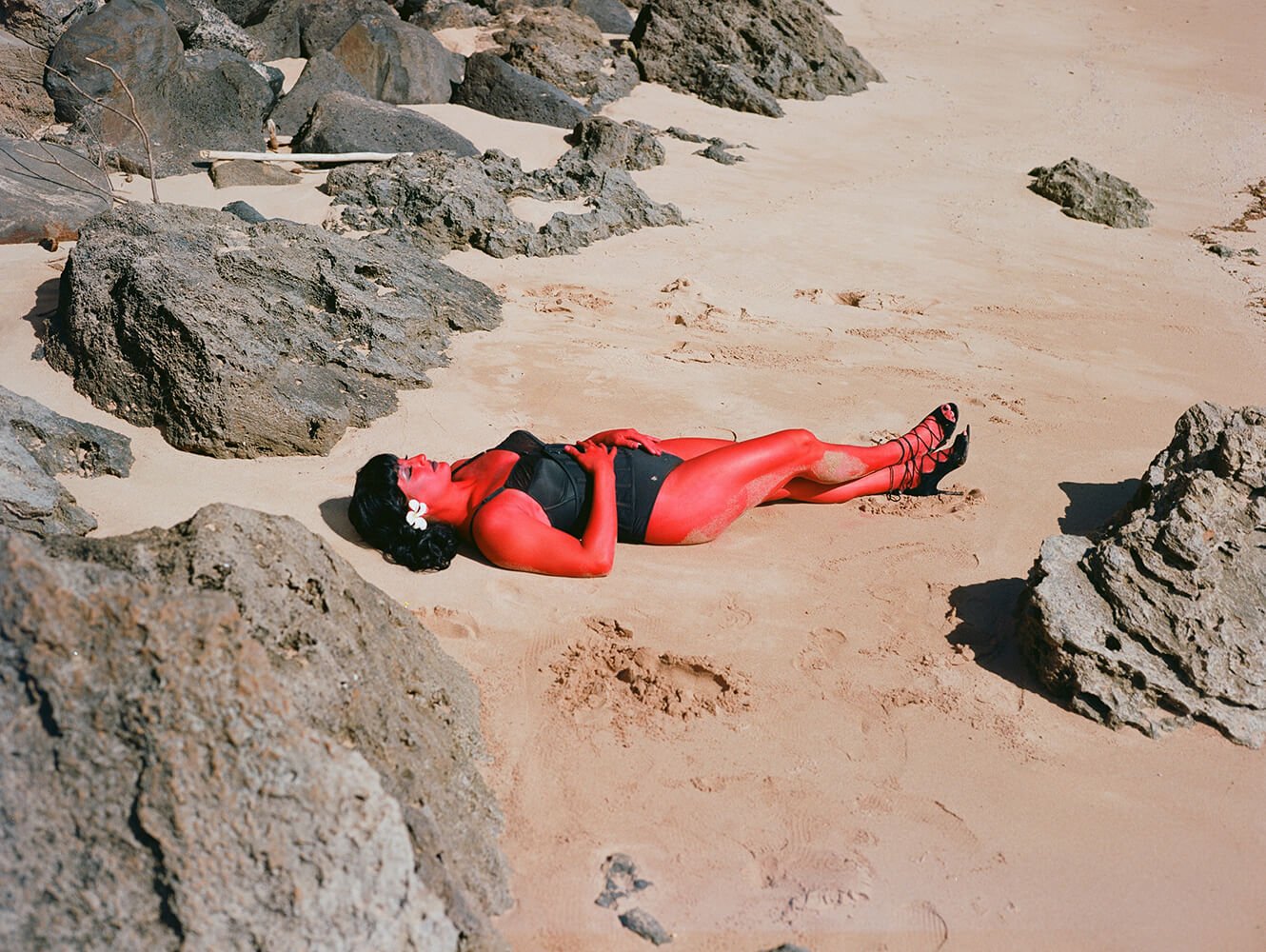
“I love the visual contrast created in this photograph. Here is a character, reminiscent of ‘Him’ from The Power Puff Girls I might add, who does not seem to belong to this world. I am one such individual who believes the Devil’s side of the story needs telling. Perhaps the Devil is a disgruntled child devoid of any affection and love. Perhaps the Devil has problems of their own that need understanding. I think of other people in our society who are demonized for their beliefs and identities because we lack empathetic understandings of their histories. The photograph shows this character at peace, whether taking a vacation from their nefarious activities or judgment for the world I leave to your rich imaginations. But the questions the image and story raises are undeniable. The framing makes the moment feel stolen. Captured by an intruder from a safe distance, too.” – TSOKU MAELA
Photographer statement – “From the series Trouble in Paradise. This series captures a fictional character I have created, the devil’s mistress, as she takes time for herself on a tropical vacation. Growing up queer in the tropics as I did can feel especially alienating. It did for me at least. I never gravitated towards the inherently physical and athletic parts the landscape. My intention with this series was to exaggerate those feelings of difference by placing a larger than life character from hell — someone we deem “bad” — and exploring their humanity. Everybody deserves to find solace. This project was especially cathartic and beautiful because the model is my childhood best friend and we have both grown into our queerness with pride.”
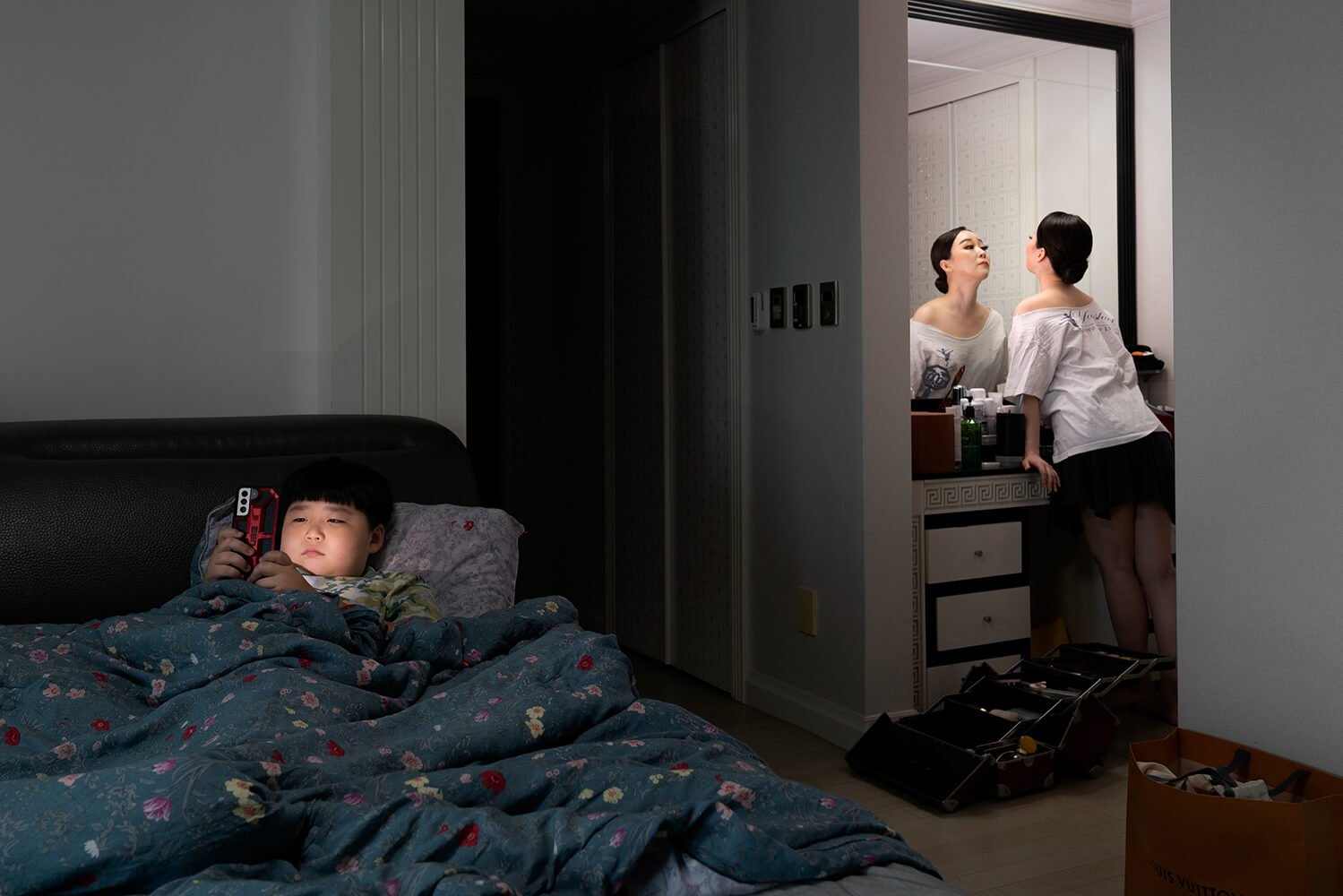
“This photograph is instructive in effectively using the frame to convey a story that needs no words for interpretation. Photographers tend to focus on creating contrast through color, highlights, and shadows. But good stories grab our attention because we are to feel some sort of tension. This work here does just that. Not only does it comment on parenting in a digital age or the challenges of parenting in general, but also topics of narcism and beauty standards.” – TSOKU MAELA
Photographer statement – “From the series Kim Saehyun. A series of photography about my nephew who became my best friend from the moment he was born. Although he is my best friend, there will be a gap between his and mine memories, differences in values will arise, and eventually we will grow up to be individual and mysterious human beings. Perhaps that path is the relationship between a child and an adult. This work shows the failure of one person to fully understand the other through the ontological uncertainty of photography.”
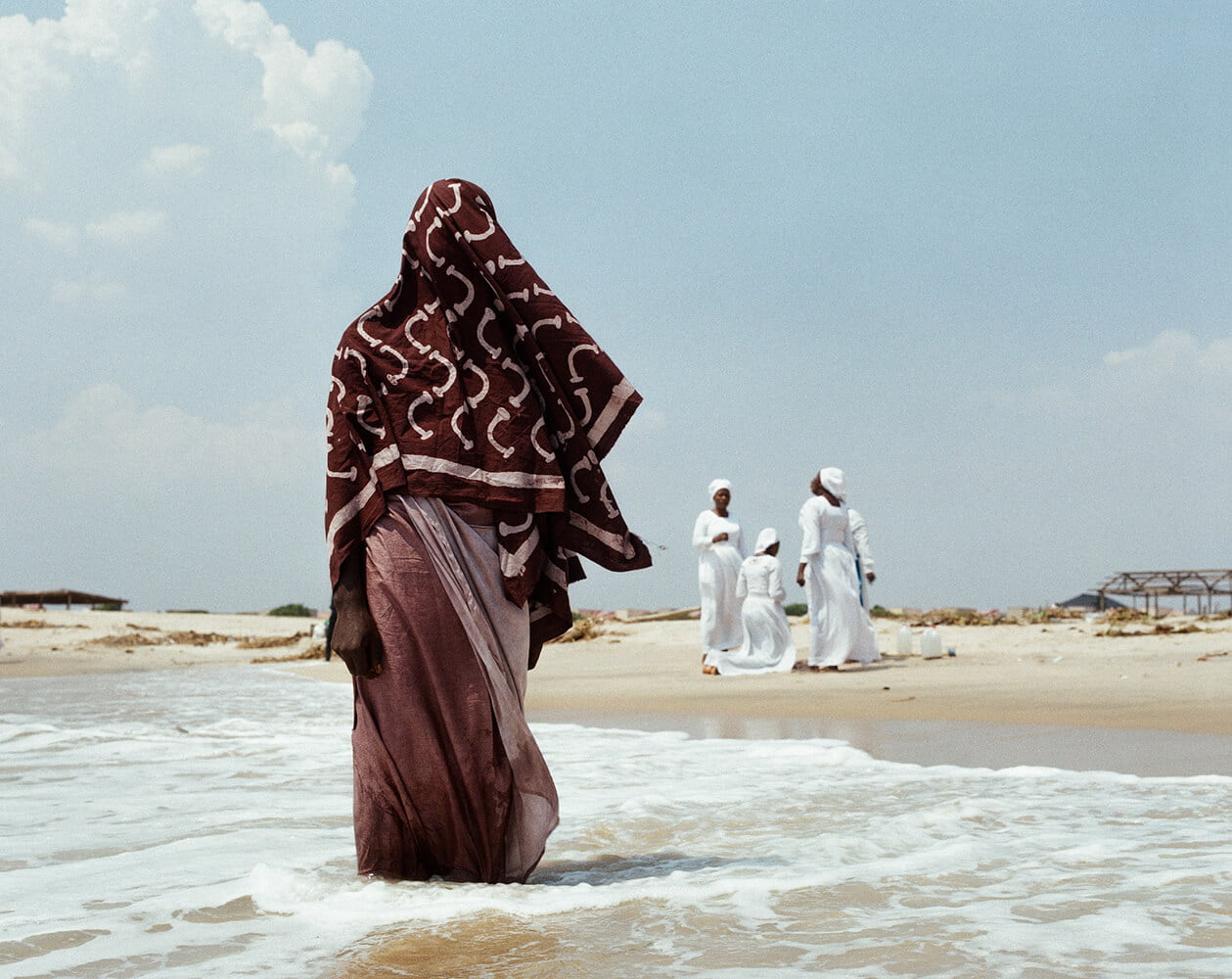
“This is a beautiful, ambiguous image that sits somewhere between candid and staged, profound and incidental. It holds an oblique aesthetic lure and an atmosphere of tranquility, but offers no easy answers. Pairing it with an equally poetic statement would help unlock its mystery.” – LIFE FRAMER
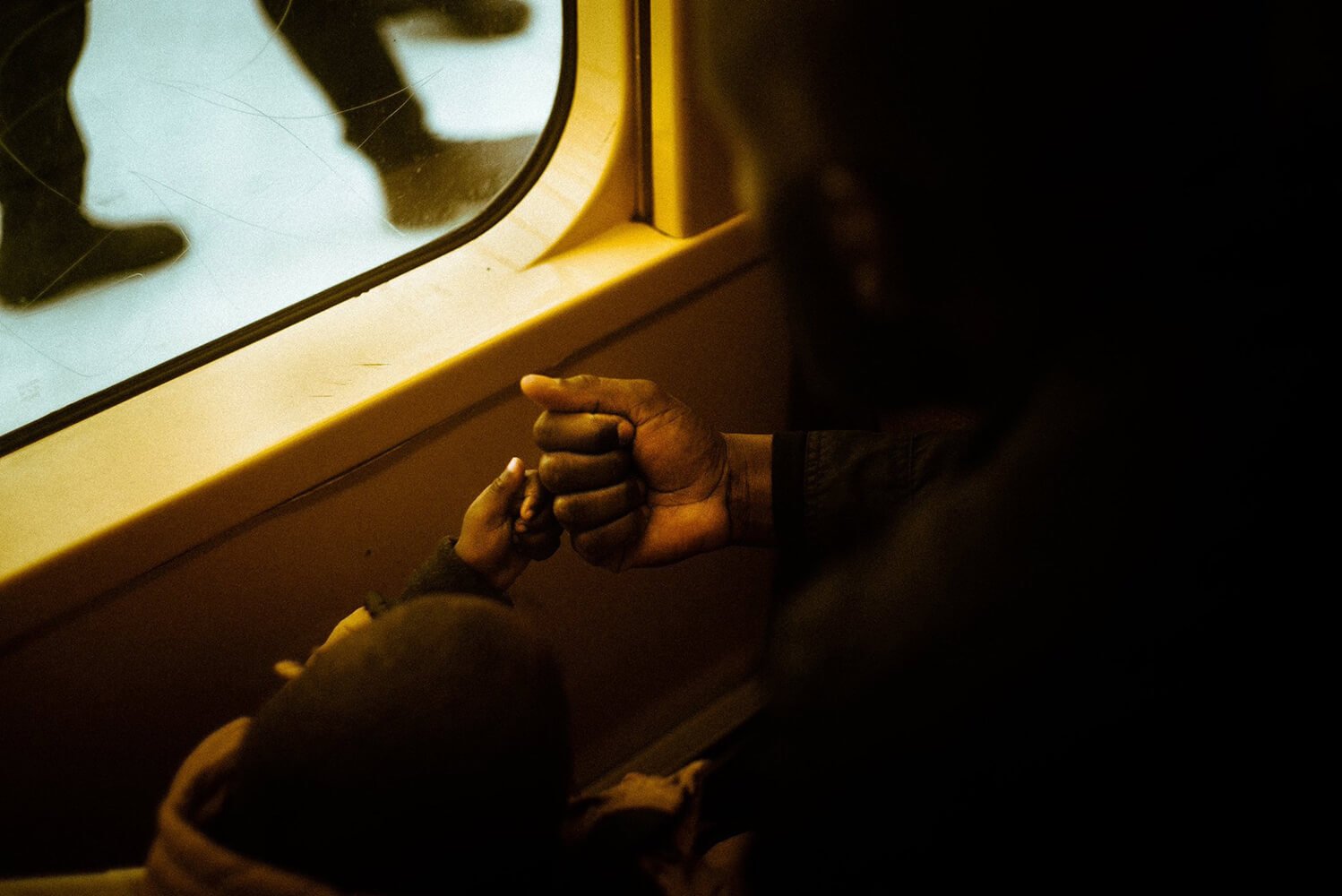
“A beautiful image that pays close attention to human connection. It’s almost surreal that the fist bump has become synonymous with our everyday interaction during the pandemic. A greeting that was understood by select subcultures was all we had to satiate our skin hunger. For anyone who has commuted via public transportation, whether a bus or train, in the hustle and bustle of the city, will be familiar with the alienation one feels amongst the many. Getting lost in an ocean of people, but every man is an island. The journey can be nerve-wracking for a lot of us, especially the young who need constant reassurance during those long commutes amidst the excitement. This gentle fist bump is a coded language developed between guardian and child. I also enjoy the contrast in color between the warm inner world of our characters against the coldness of the outside. Here we feel welcome and safe, even though we have no idea where we are going there is little doubt that we will arrive.” – TSOKU MAELA